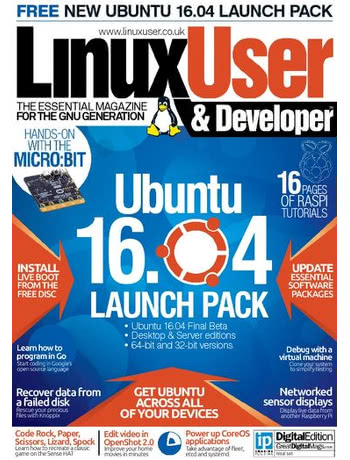 In this month’s Hobby Tech column I take a good long look at the BBC micro:bit, CubieTech’s latest Cubietruck Plus (Cubieboard 5) single-board computer, and a pack of Top Trumps-inspired playing cards based on vintage computers.
In this month’s Hobby Tech column I take a good long look at the BBC micro:bit, CubieTech’s latest Cubietruck Plus (Cubieboard 5) single-board computer, and a pack of Top Trumps-inspired playing cards based on vintage computers.
Beginning with the micro:bit, I was lucky enough to be on the receiving end of a press sample when the much-redesigned educational device was finally ready to ship to schools across the UK. Based on the ARM Cortex-M0 microcontroller and boasting integrated Bluetooth Low Energy (BLE), the micro:bit’s main selling point is its excellent support: the web IDE includes four languages suitable for everyone from absolute beginners to experts, there is documentation galore, and the BBC’s TV output includes shows which remind me of the glory days of the BBC Micro and its related programming.
At least, that would be a selling point if the board was actually up for sale. Despite having now mostly fulfilled its promise to ship free micro:bits to all Year Seven pupils in the UK, the BBC has still made no announcement about commercial availability for the educational gadget. Those whose appetites are whetted by the review, then, are best off looking at the CodeBug on which the micro:bit was based, or the new Genuino/Arduino 101 if Bluetooth LE support is a requirement.
The Cubietruck Plus, meanwhile, is an altogether different beast. Kindly supplied by low-power computing specialist New IT, the board is – as the name suggests – a follow-up to CubieTech’s original Cubietruck. The old dual-core processor is long gone, replaced with an Allwinner H8 octa-core chip that blazed through benchmarks with aplomb – and without hitting the boiling-point temperature highs of the rival Raspberry Pi 3.
Sadly, there’s one piece of information that didn’t make it into the review: shortly after the issue went to press, security researchers discovered a debug vulnerability left in Allwinner’s customised Linux kernel which allows any application on the system to gain root permission. Although affecting only selected operating systems, it’s something to be aware of if you’re in the market for an Allwinner-powered SBC.
Finally, the playing cards. Created by start-up 8bitkick following a successful Kickstarter campaign, the deck is nostalgia in a box. The idea is to bring the Top Trumps concept of collectable, trivia-esque comparison gaming to vintage computing: the cards feature everything from the Acorn Atom to the TI-99/4A, plus a joker in the deck in the form of the Raspberry Pi 2 Model B.
The cards are printed with a very high quality finish, but it’s the source of the images that is of most interest: rather than take the pictures itself, 8bitkick has instead scoured the web for images in the public domain or licensed as Creative Commons. It’s no theft, though: while most Creative Commons licenses allow for even commercial reuse if properly attributed, 8bitkick has promised to upload the full deck design to its website for free download and printing.
All this, plus lots of interesting things by people who aren’t me, is only a short trip to the newsagent’s away – or you can stay exactly where you are and grab a digital copy from Zinio or similar services.

 For my regular review in Linux User & Developer this month I had the great pleasure to spend time with the BBC’s first serious hardware project since it teamed up with Acorn in the 80s: the BBC micro:bit.
For my regular review in Linux User & Developer this month I had the great pleasure to spend time with the BBC’s first serious hardware project since it teamed up with Acorn in the 80s: the BBC micro:bit.

